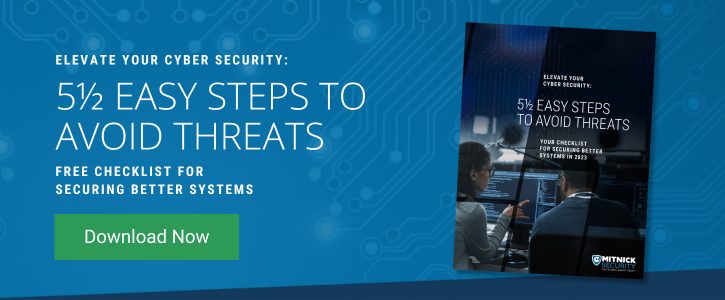If you recently received a penetration test, you’re on the right track to improving your cybersecurity posture. However, you may be wondering what the next step is.
With so many vulnerabilities exposed, where should you start? And how do you read the penetration testing report you’ve received?
Here's some advice from the pentesting experts at Mitnick Security Consulting on understanding your penetration test report and prioritizing the best next steps for fortifying your cybersecurity posture.
What You'll Receive in a Pentesting Report
Your report may vary based on the type of pentest you received. There are six main penetration tests:
- External network
- Internal network
- Social engineering
- Physical
- Wireless
- Web Application
Although the content in the penetration testing report may vary depending on which type of test your organization chooses, the basic structure of the report will stay the same.
The structure of the penetration test report will include an executive summary, a breakdown of the pentest, and recommendations for mitigating risks. The executive summary should have a high-level review of the pentester's findings. The breakdown of the penetration test goes into far more detail, including the technical aspects of how the testing is conducted.
Prioritizing Your Pentesting Report’s Findings
Start With Your Highest Risk Ratings
Studies show that companies’ cybersecurity is getting significantly worse, making it a priority to focus on the highest risks to your enterprise after receiving your penetration testing report.
Not all risks are equal, and tackling threats with a higher severity first can make the list of vulnerabilities seem less daunting.
The pentesters break down your findings by severity level, labeling every risk as critical, high, medium, or low in priority. The severity levels are determined by the ease with which a threat actor could leverage weak points or attack vectors, as well as the likelihood of them doing so.
For example, findings are marked as critical when a threat actor could potentially abuse the vulnerability to instantly obtain code execution or compromise highly sensitive assets and information within the organization.
On the other hand, a low-risk vulnerability is less unlikely to be exploited individually and is generally used in conjunction with medium or higher risks to gain access to highly sensitive information.
Create Your Strategy for Mitigation
Once you've received your pentest report and reviewed all of the risks and their risk ratings, it is time to create a strategy for the mitigation of cybersecurity threats. We know that organizations can't fix/mitigate every single finding immediately, which is why Mitnick Security provides short-term, medium-term, and long-term goals in every pentesting report we provide.
Short-term goals. These should aim to be completed within three months of receiving the report
Medium-term goals. These should aim for completion within six months following the report.
Long-term goals. These are recommended to put your organization in line with industry expectations and should strive to be completed within six months to two years of receiving the report.
By focusing on the goals first, rather than trying to dig directly into each vulnerability, the workload is more manageable and cost-effective. Review the short-term and medium-term goals with the technical staff and stakeholders to find the best course forward.
Each vulnerability listed in the pentesting report comes with a comprehensive and easy-to-follow remedial action. This way, you know exactly what steps you’ll need to take to mitigate the risk.
One Pentest One Time is Not Enough
Once your team and organization feel that all of the issues found in the pentest report have been remediated, you should schedule a follow-up penetration test. The follow-up test will ensure that all of the previously identified risks have indeed been remediated and, in doing so, no new vulnerabilities have been created.
A penetration test on its own is useful in helping to determine what security holes lie within your organization's infrastructure, but ultimately, regularly scheduled penetration tests should be conducted at least annually and be a permanent part of your organization's security and risk management plans.
Additionally, it is best practice to perform a penetration test any time significant changes are made to the infrastructure, such as when new applications are developed or new network equipment is installed.
Real Pentesting Results in Action
Threat actors are always learning new techniques to target organizations and their users, while new vulnerabilities are being discovered every day.
Routine pentests, as well as reports, help provide a way to keep organizations a step ahead of threat actors. Furthermore, the latest industry resources can also help your enterprise remain out of harm’s way. Learn to Avoid Cyber Threats in 5 ½ Easy Steps



